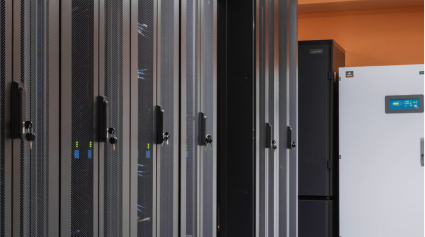Research results will help identify requirements, optimize infrastructure
Columbus, OH [April 17, 2018] – Vertiv, formerly Emerson Network Power, today released Defining Four Edge Archetypes and their Technology Requirements, a global, research-based analysis of network edge use cases, resulting in the identification of four main archetypes for edge applications and the technology required to support them. Vertiv edge experts, in conjunction with an independent third party consulting firm, identified more than 100 use cases and refined the initial list to 24 considered to have the greatest impact on businesses and end users, based on projected growth, criticality and financial impact.
Experts identified data-centric sets of workload requirements for each edge use case and corresponding needs for performance, availability and security. They examined specific performance requirements, including latency, availability, scalability and security, in conjunction with the need for encryption, authentication and regulatory compliance. They also looked at the need to integrate with existing or legacy applications and other data sources, while considering the number of edge locations in a given network.
"The opportunity around edge computing is significant but so is the complexity. The aim of this research is to provide more clarity around key edge use cases and the implications for the design and operation of digital infrastructure,” said Giordano Albertazzi, president of Vertiv in Europe, Middle East and Africa. “By analysing what edge really means in all its different forms – from content distribution to autonomous vehicles – we can help our customers, partners and other stakeholders accelerate and focus their edge strategies."
The four archetypes are:
- Data Intensive – This includes use cases where the amount of data makes it impractical to transfer over the network directly to the cloud or from the cloud to point-of-use due to data volume, cost or bandwidth issues. Examples include smart cities, smart factories, smart homes/buildings, high-definition content distribution, high-performance computing, restricted connectivity, virtual reality, and oil and gas digitization. The most widely used example is high-definition content delivery, where major content providers such as Amazon and Netflix actively partner with colocation providers to expand delivery networks to bring data-intensive streaming video closer to users to reduce costs and latency.
- Human-Latency Sensitive – This archetype includes use cases where services are optimized for human consumption, and it is all about speed. Delayed data delivery negatively impacts a user’s technology experience, potentially reducing a retailer’s sales and profitability. Use cases include smart retail, augmented reality, website optimization, and natural language processing.
- Machine-to-Machine Latency Sensitive – Speed also is the defining characteristic of this archetype, which includes the arbitrage market, smart grid, smart security, real-time analytics, low-latency content distribution, and defence force simulation. Because machines are able to process data much faster than humans, the consequences for slow delivery are higher than in the Human-Latency Archetype. For example, delays in commodities and stock trading, where prices fluctuate within fractions of a second, may turn potential gains into losses.
- Life Critical – This archetype encompasses use cases that directly impact human health and safety. Consequently, speed and reliability are vital. Use cases include smart transportation, digital health, connected/autonomous cars, autonomous robots, and drones. Autonomous vehicles, for example, must have updated data to operate safely, as is the case with drones that may be used for e-commerce and package delivery.
“As edge computing continues to evolve and expand, our goal is to bring clarity and simplicity to the critical infrastructure required to support the future of edge computing by viewing a wide range of edge applications through the lens of the most impactful archetypes,” said Martin Olsen, vice president, global edge and integrated solutions at Vertiv. “Vertiv is building on this initial phase of our research to define technology requirements for each archetype to help accelerate edge deployments and ensure local infrastructure provides the security, speed and availability a particular application requires.”
For more information, visit VertivCo.com/Edge.
About Vertiv
Vertiv designs, builds and services critical infrastructure that enables vital applications for data centers, communication networks and commercial and industrial facilities. Formerly Emerson Network Power, Vertiv supports today’s growing mobile and cloud computing markets with a portfolio of power, thermal and infrastructure management solutions including the Chloride®, Liebert®, NetSure™ and Trellis™ brands. For more information, visit VertivCo.com.
Contact:
Bridget Lew
T +44 208 618 2900
E bridget.lew@fhflondon.co.uk



